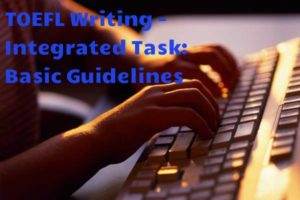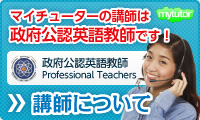▮ リスニング力をつける効果的学習法!
TOEFL ライティング総合問題(Integrated Task)では、パッセージを読んだ後、
レクチャーを約2分聴いた後で、レクチャーの内容を要約することと、
それがどうのようにパッセージの内容と関連しているか(多くは異なる観点)を
ライティングで表現するテストです。 読解力同様、リスニング力が問われます。
リスニング力は、ただひたすら英語を聞き流すだけでは上達しません。
いくつかのことに気を付けて英語を聴くことで飛躍的にリスニング力はアップします。
リスニングが苦手な方は、以下のことに注意して学習をしてください。
1. Practice listening to different kinds of materials in English everyday. Listen to short audio clips first and gradually increase the length of audio materials you listen to.
2. Avoid distractions and always listen actively.
3. Try to answer the “who, what, when, where, why, and how” questions about the topic. Carefully think about the speaker’s purpose of the lecture.
4.Pay attention to the difference between the main ideas and details presented. Be mindful of details like facts, examples, or opinions presented.
5. Learn to recognize different styles of organization such as theory and evidence, cause and effect, steps of a process, and comparison of two things.
6. Take down notes while listening so that you can gather important details, relevant points, and new expressions or vocabularies. Write down only the information that you hear. Do not attempt to interpret anything based on your personal understanding or knowledge of the topic.
7. Listen to keywords or signal words like the following:
Opinion (I think, It appears that, It is thought that)
theory (In theory)
inference (therefore, then)
negatives (not, words that begin with “un,” “non,” “dis” “a”)
fillers (non-essential information) (uh, er, um)
reasons (because, since)
results (as a result, so, therefore, thus, consequently)
examples (for example, such as)
comparisons (in contrast, than)
an opposing idea (on the other hand, however)
another idea (furthermore, moreover, besides)
a similar idea (similarly, likewise)
restatements of information (in other words, that is)
conclusions (in conclusion, in summary)
8. Pay attention to pacing, intonation and other ways that speakers indicate that information is important like repeatition of information, paraphrasing of sentences, or stressing of words.
9. After each listening activity, write a short summary on the topic explaining the main idea and what the speaker is trying to say.
10. Listen to the same audio clip and review your notes and summary. Change or add more details if necessary.
11. Use different sources of English listening materials: News, Audio Books, Television Programs, Movies, Music, etc.
12. You can also go to these websites for listening practice:
*National Public Radio (www.npr.org)
*CBS News (www.cbsnews.com)
*Randall’s Cyber Listening Lab (www.esl-lab.com)
*BBC World Service.com Learning English (www.bbc.co.uk/worldservice/learningenglish)
13. Exchange conversations with an English speaker. It will help improve your ability to comprehend and quickly respond.
14. Attend academic lectures, presentations, or gatherings in English.
15. Make it a hobby to be an attentive listener. Practice, practice, practice!
Good luck!














